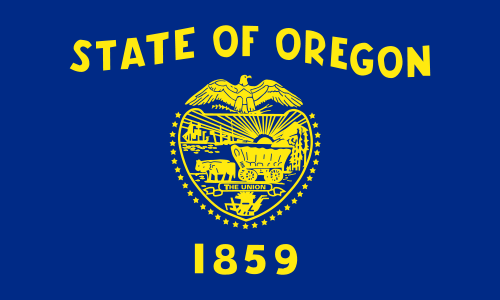It’s the 12 Days of Ballotpedia! Your gift powers the trusted, unbiased information voters need heading into 2026. Donate now!
Oregon Measure 35, Bases for Healthcare Providers Initiative (1996)
| Oregon Measure 35 | |
|---|---|
| Election date |
|
| Topic Business regulations and Healthcare governance |
|
| Status |
|
| Type Initiated state statute |
Origin |
Oregon Measure 35 was on the ballot as an initiated state statute in Oregon on November 5, 1996. It was defeated.
A "yes" vote supported limiting pay bases for health care providers to worked performed, hourly wages, prearranged salary or benefits, bonuses, or expense reimbursement. |
A "no" vote opposed limiting pay bases for health care providers to worked performed, hourly wages, prearranged salary or benefits, bonuses, or expense reimbursement. |
Election results
|
Oregon Measure 35 |
||||
|---|---|---|---|---|
| Result | Votes | Percentage | ||
| Yes | 441,108 | 35.31% | ||
| 807,987 | 64.69% | |||
-
- Results are officially certified.
- Source
Text of measure
Ballot title
The ballot title for Measure 35 was as follows:
| “ | RESTRICTS BASES FOR PROVIDERS TO RECEIVE OO PAY FOR HEALTH CARE QUESTION: Shall statute restrict bases on which health care providers may receive pay to five listed in statute? SUMMARY: Adopts statute. Measure restricts bases on which health care providers may receive pay. Providers accepting payment on any other basis lose business and professional licenses. Restrictions do not apply to individuals and families. Permissible bases are: work performed, hourly wages, prearranged salary/benefit, bonus, or expense reimbursement. Disallows some current payment arrangements. Defines “work performed” as delivery of health care for specific patient needs. Defines “health care provider" to include health care professionals and employers/contractors of health care professionals, but to exclude insurers. ESTIMATE OF FINANCIAL IMPACT: Using existing average cost differences between Health Maintenance Organization (HMO) and indemnity type health coverage, direct expenditures by state and local government will increase. Assuming the increased health care costs will be borne by the employer, state government expenditures would increase by $57 million annually, and local government direct expenditures would increase by $22 million annually. | ” |
Full Text
The full text of this measure is available here.
Path to the ballot
An initiated state statute is a citizen-initiated ballot measure that amends state statute. There are 21 states that allow citizens to initiate state statutes, including 14 that provide for direct initiatives and nine (9) that provide for indirect initiatives (two provide for both). An indirect initiated state statute goes to the legislature after a successful signature drive. The legislatures in these states have the option of approving the initiative itself, rather than the initiative appearing on the ballot.
In Oregon, the number of signatures required for an initiated state statute is equal to 6% of the votes cast in the last gubernatorial election. A simple majority vote is required for voter approval.
See also
External links
Footnotes
State of Oregon Salem (capital) | |
|---|---|
| Elections |
What's on my ballot? | Elections in 2025 | How to vote | How to run for office | Ballot measures |
| Government |
Who represents me? | U.S. President | U.S. Congress | Federal courts | State executives | State legislature | State and local courts | Counties | Cities | School districts | Public policy |


